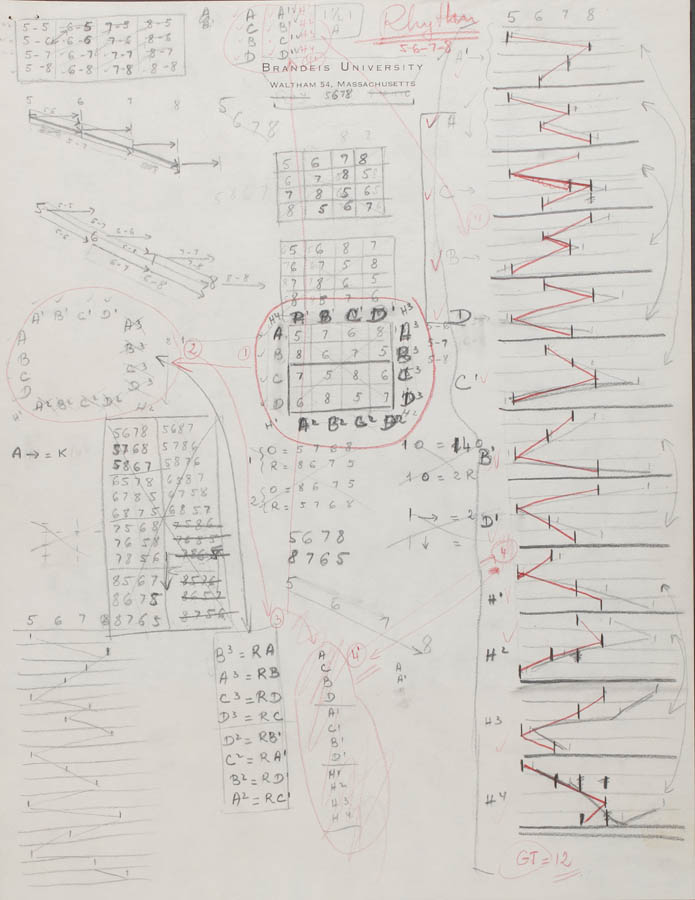Selected Works
↑Over the course of his career, Lazarof published 126 compositions. His works feature technically challenging passages and unique combinations of instruments playing a wide range of textures, dynamics, and rhythms. His style was in a constant state of evolution, always pushing boundaries—for musicians, and for himself; he refused to be easily categorized into a particular school or ideology of music. His creative process has been beautifully recorded in his manuscripts, which follow many works from conception to final product.
When preparing to write for an orchestra, Lazarof would spend time watching the orchestra perform. He wanted to listen, to research, and to hear where they were strongest. Only then would he write the piece, often sketching out specifically where the musicians should sit. He often conducted his own pieces and continued doing so into his 70s. On this page you can enjoy clips from some of Lazarof’s performed works while viewing pages from his draft compositions and stage arrangements. The full manuscript materials and audio files for these and many other Lazarof pieces can be found on the Brandeis Distinctive Collections page.
Concerto for Viola and Orchestra
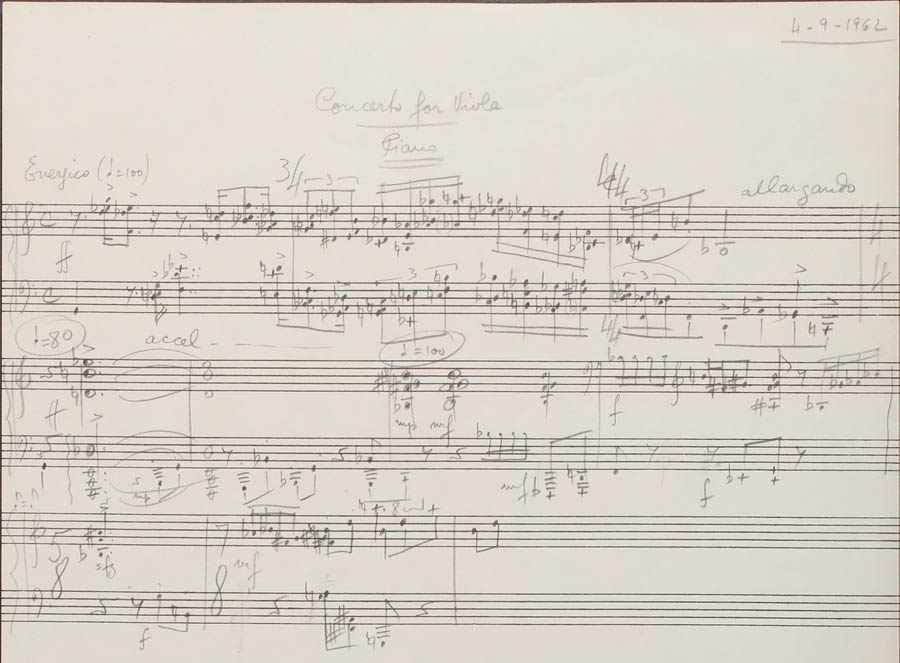
Page from draft of Concerto for Viola and Orchestra
April 9, 1962
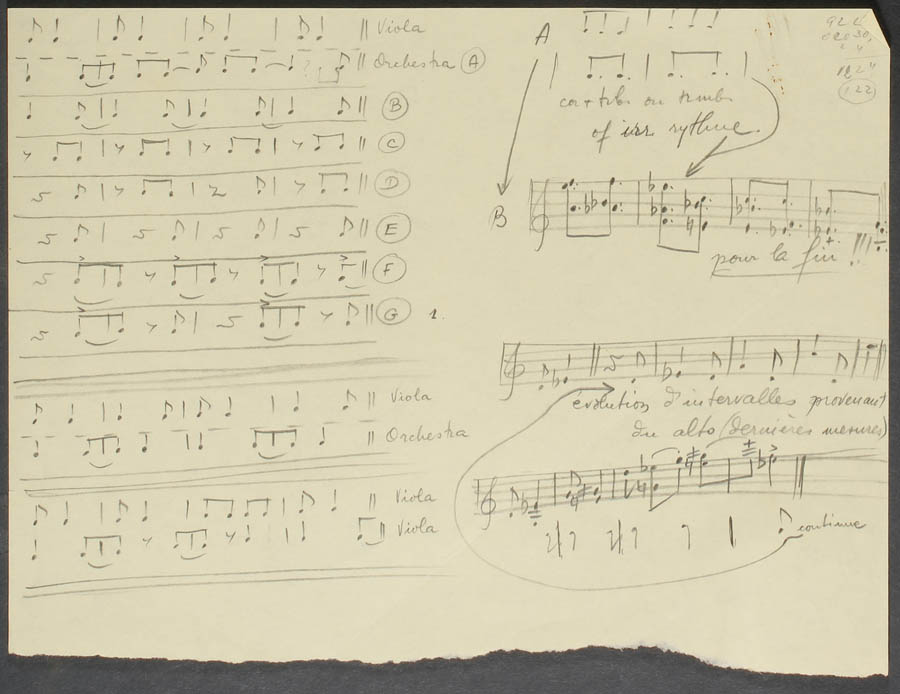
Page from draft of Concerto for Viola and Orchestra
Concerto for Viola and Orchestra (clip)
May 28, 1963
Concertante
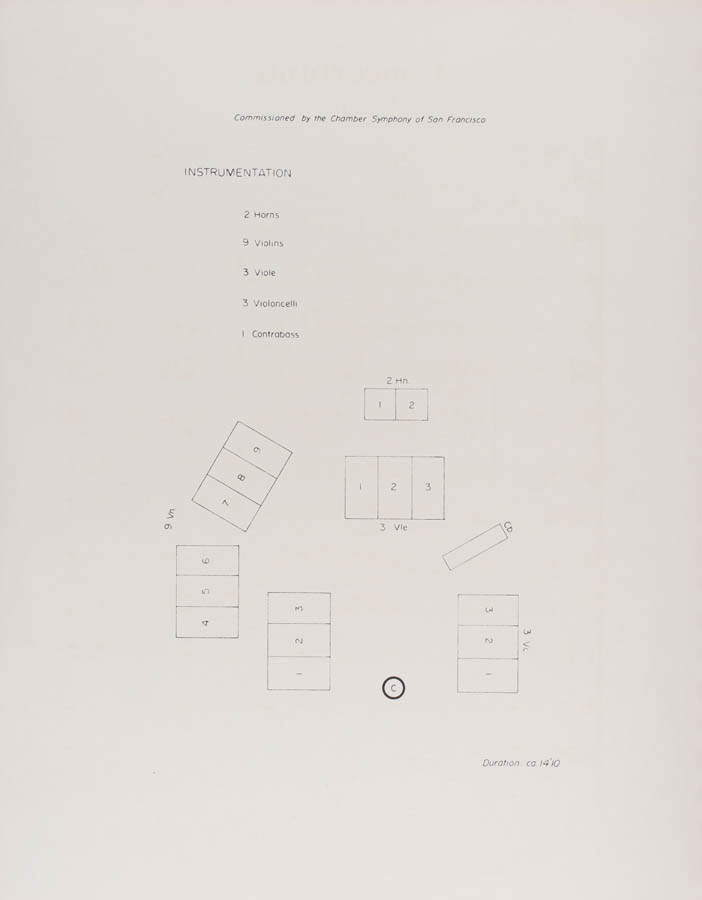
Page from Concertante printed score
Transcript
Commissioned by the Chamber Symphony of San Francisco
Instrumentation
- 2 Horns
- 9 Violins
- 3 Viole
- 3 Violoncello
- 1 Contrabass
Duration ca. 14’10
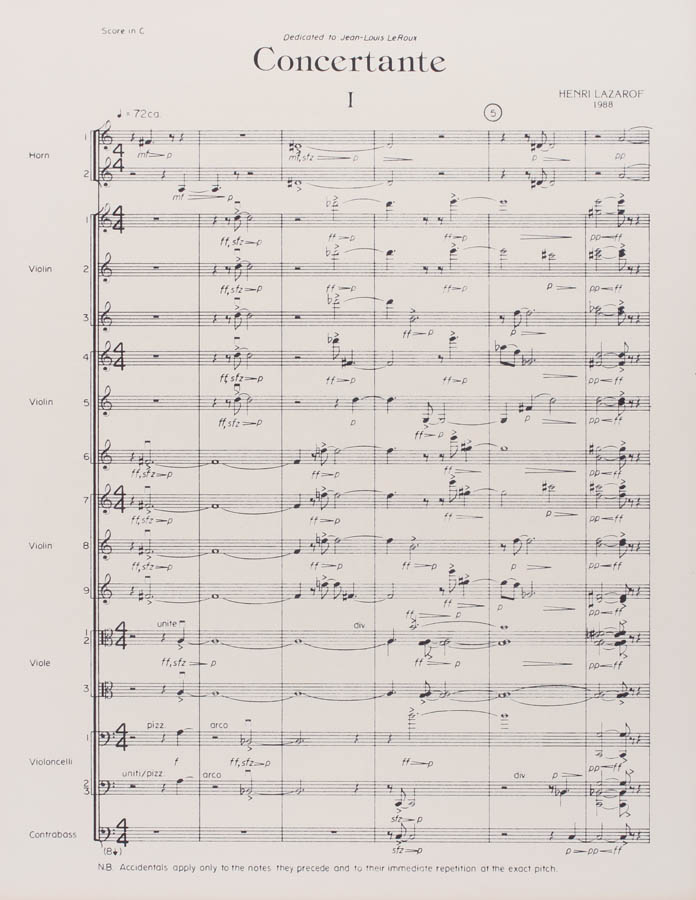
Page from Concertante printed score
Concertante (clip)
For sixteen string instruments and two French horns in two movements
American Premiere
Chamber Symphony of San Francisco
December 12, 1988
First Unitarian Church, San Francisco
Structures Sonores
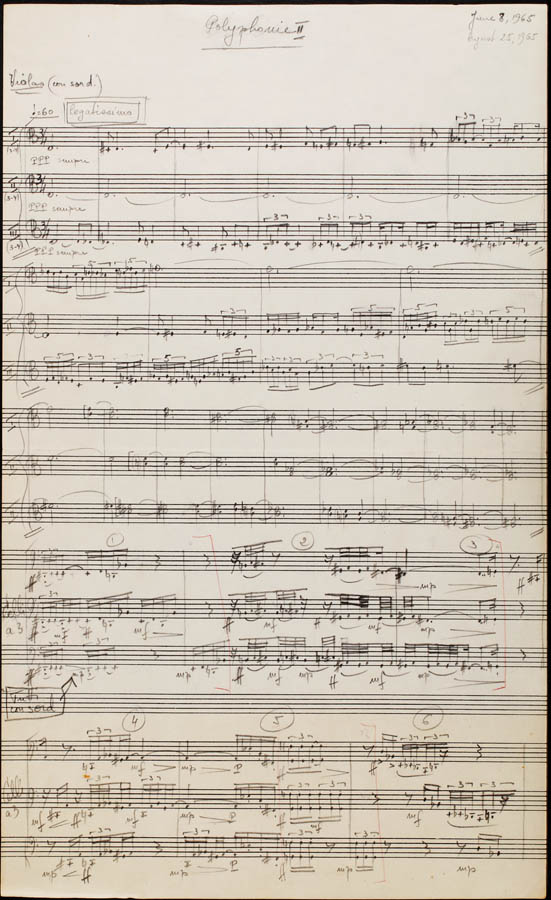
Page from draft of Structures Sonores: Polyphonie II
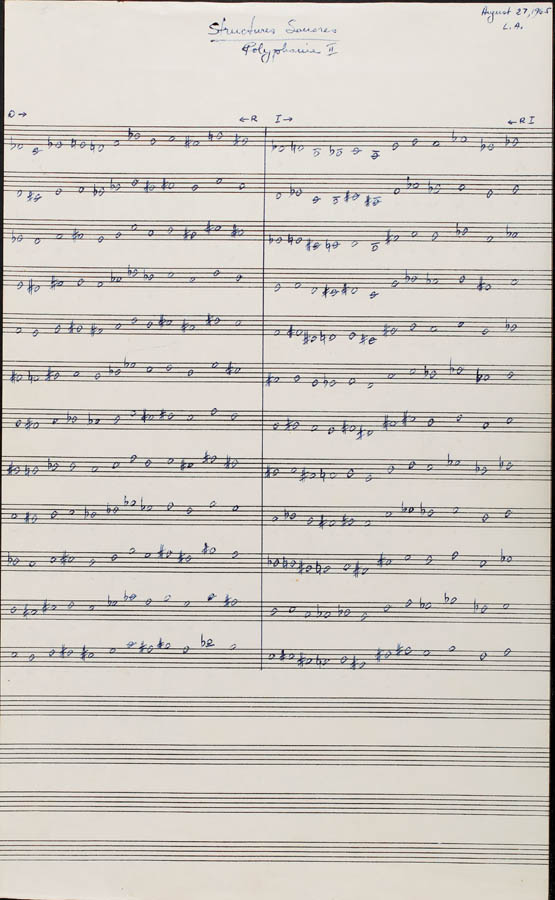
Page from draft of Structures Sonores: Polyphonie II
Structures Sonores (clip)
(1965-66)
Introduction
Polyphonie I
Etude I
Polyphonie II
Etude II
Polyphonie III
Textures
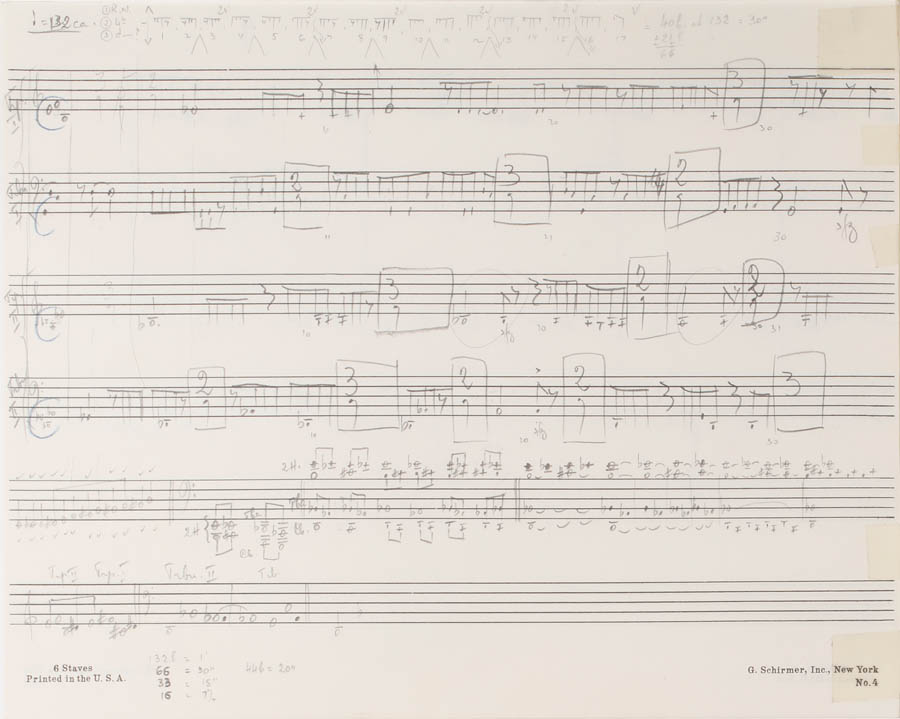
Page from draft of Textures
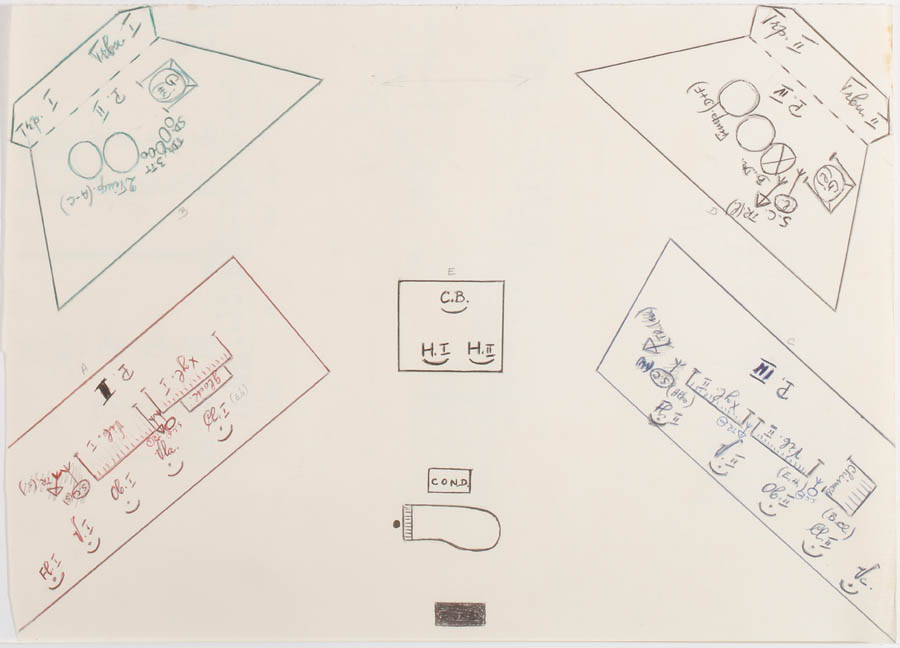
Charted layout of instruments and performers
Textures (clip)
Spectrum
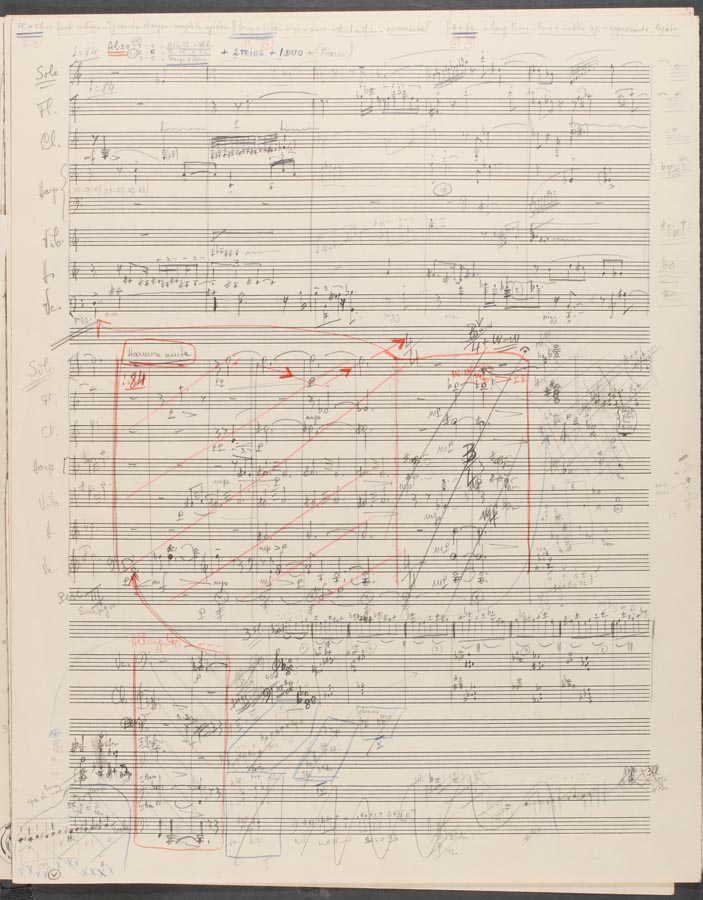
Page from draft of Spectrum
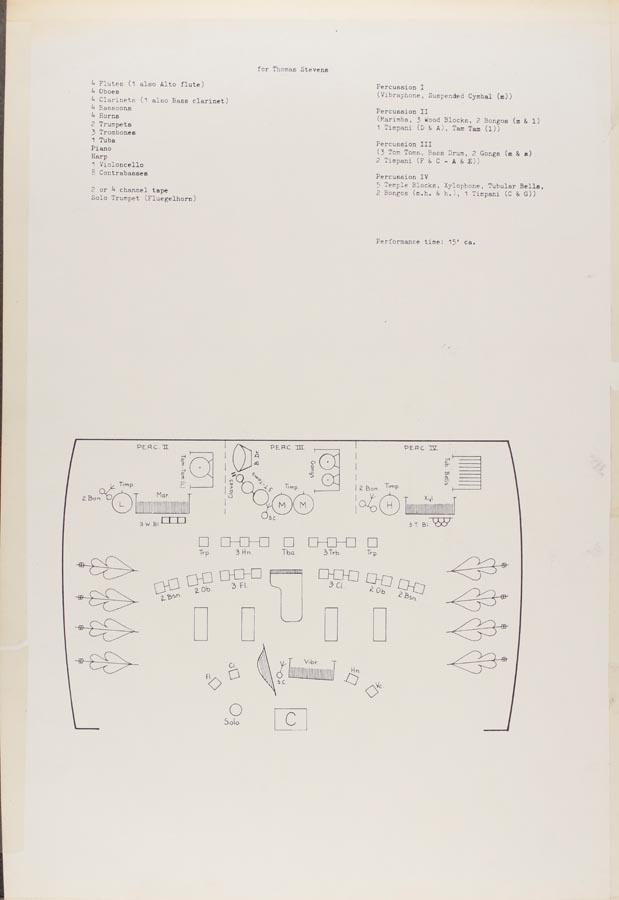
List of instruments and charted layout of instruments and performers
Lazarof would often chart the ideal location and grouping for the instruments and musicians in the performance of his pieces
Transcript
for Thomas Stevens
- 4 Flutes (1 also Alto flute)
- 4 Oboes
- 4 Clarinets (1 also Bass clarinet)
- 4 Bassoons
- 4 Horns
- 2 Trumpets
- 3 Trombones
- 1 Tuba
- Piano
- Harp
- 1 Violoncello
- 8 Contrabasses
- 2 or 4 channel tape
- Solo Trumpet (Flugelhorn)
- Percussion I
(Vibraphone, Suspended Cymbal (m)) - Percussion II
(Marimba, 3 Wood Blocks, 2 Bongos (m & l)
1 Timpani ( D & A), Tam Tam (1)) - Percussion III
(3 Tom Toms, Bass Drum, 2 Gongs (m & s)
2 Timpani (F & C - A & E)) - Percussion IV
5 Temple Blocks, Xylophone, Tubular Bells,
2 Bongos (m.n. & h.), 1 Timpani (C & G))
Performance time: 15’ ca.
Spectrum (clip)
Premiere performance. Utah Symphony Orchestra.
Conductor: Henri Lazarof.
Soloist: Thomas Stevens. January 17, 1975
Odes
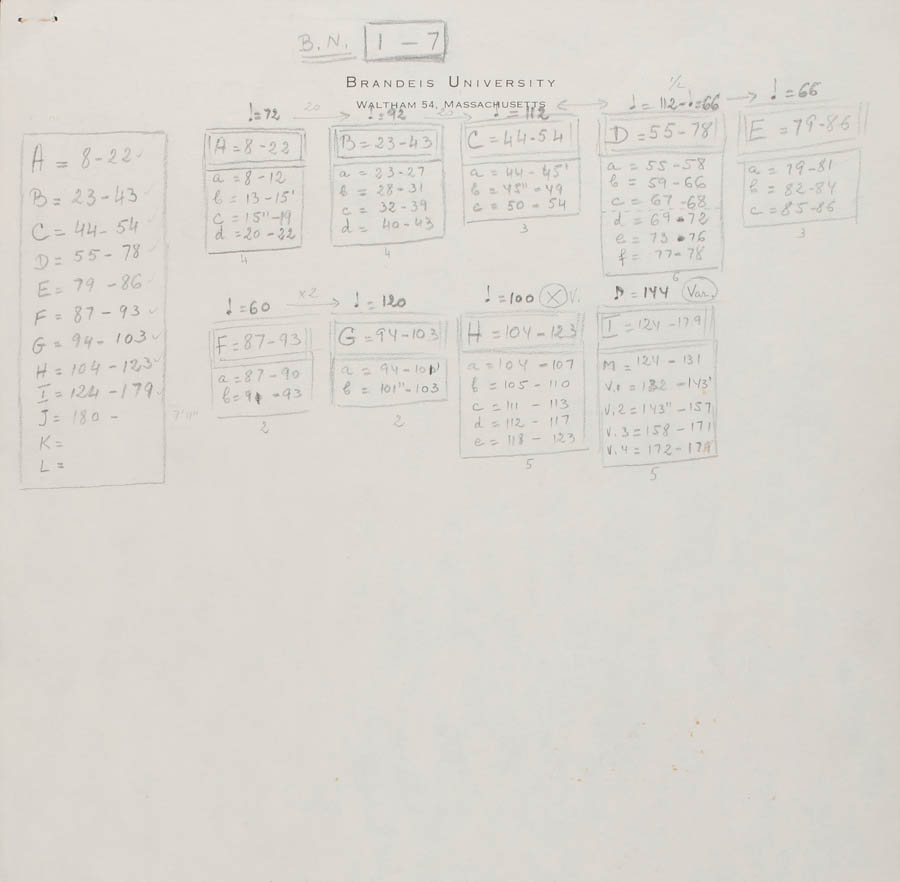
Page from draft of Odes
